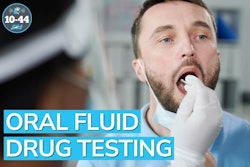Note: This is the third of a three-part series that takes a look at key findings from this year’s Best Fleets to Drive For program. Written by CarriersEdge President Mark Murrell, the columns cover noticeable trends/findings in driver compensation and benefits, HR practices and operational strategy that effect a driver’s day-to-day experience. The final installment will focus on what fleets are doing to improve operating practices.
Do they love it or hate it? That is, do drivers feel good about going to work each day or do they regret it? How a driver perceives the day-to-day experience working for a company can significantly impact their overall well-being and satisfaction with their employer.
In the final part of this series on key findings from this year’s Best Fleets to Drive For program, we’ll look at what program participants are doing to improve operating conditions and safety for their drivers.
Vehicle downtime
For years, the top performing companies in the Best Fleets program have invested in reliable and comfortable equipment for their drivers. In fact, the majority of the finalists in this year’s Best Fleets program schedule regular meetings or have other formal programs to get input from drivers on vehicle specs or selection. This collaborative process helps find specs that work for both drivers and the fleet.
Not only that, when it comes time to perform preventative maintenance, these fleets have done well at using technology that is available to monitor truck components and use the vehicle information to schedule when trucks need to be serviced. When maintenance is due, we’ve seen the best strategically schedule PMs around drivers’ schedules or during times that are the least disruptive to operations. In the event truck maintenance needs to be completed when a driver is scheduled, we found that more than 80% of the Best Fleets pay and/or make accommodations. Accommodations may include providing a loaner vehicle, reassigning drivers to local work temporarily, or in some cases, compensation for the time they spend waiting on service.
Shipper delays
Fleets have always paid drivers for excess waiting time, but what constitutes “excess” time has changed over the past few years. As fleets find more ways to improve the overall experience for drivers and remove the problem areas that lead to frustration, the average wait time before receiving detention pay has decreased significantly. Just a couple of years ago, only 33% of the fleets in the Best Fleets Top 20 paid drivers within a 90-minute wait time for shippers. This year, nearly all of the Best Fleets or members of the Best Fleets to Drive For Hall of Fame paid drivers starting at 90 minutes or earlier.
To gauge a driver’s experience with shippers, it’s standard practice among participants in the Best Fleets program to use customer scorecards, mobile apps, surveys, or other communication platforms to collect feedback from drivers. That information helps fleets work with their customers to address concerns drivers have in hopes the issues can be resolved. This goes a long way in showing drivers that their company goes to bat for them in improving lost time at the loading dock.
Safety technology/vehicle components
We’ve seen safety technologies fleets are using to track driving behavior or record safety-related incidents accelerate in recent years. It used to be considered progressive for a fleet to use dashcams. Now nearly 100% of the Best Fleets in this year’s program use them as part of their safety program. In this era of trucking, not having technology that can provide evidence and clear a driver or a company from an incident that isn’t their fault is risky business. Side cameras to monitor passing vehicles are becoming the next big thing fleets are beginning to integrate into their safety programs. Driver safety is a high priority among fleets in the Best Fleets program, and using available safety technologies plays a key role in managing their safety initiatives.
When it comes to vehicle components, one of the more noticeable changes we’ve seen is that more fleets are now spec’ing their tractors and trailers with disc brakes instead of traditional drum brakes. Disc brakes have been available for years, but we’re seeing fleets gravitate towards these brakes more than ever before. The reduced stopping distance compared to drum brakes better supports driver safety and lowers the chances of an accident.
Technology integration
The fleets that are proactive in identifying operational deficiencies and developing strategies to improve areas of their business typically score well in the operational strategy section of the Best Fleets program. All the technology that’s been introduced to the industry has made it easier for fleets to gain insight into how efficiently they operate or to find new opportunities to improve driver productivity. While many of these technologies possess benefits for company management, introducing major tech integrations can be challenging if not done correctly. Assuming drivers or other staff members will adopt new tech without showing them the benefits or why they’re making changes isn’t smart. The majority of the Best Fleets know this, which is why many have pilot programs or task forces to receive feedback from drivers before new technology is fully implemented. This transparency or trial period helps ensure everyone has a chance to share their opinions about how it works. Based on the feedback management receives, they can factor in all points of view for the technology they’re considering.
Drivers want to feel like their voices are being heard when major decisions are being made that’ll affect how they do their jobs. The fleets that do well in the Best Fleets program do a great job of listening to their drivers.
Creating a workplace environment where drivers want to be is key to recruiting and retaining good drivers. How companies address practices that affect a driver’s day-to-day experience plays a major role in that.












